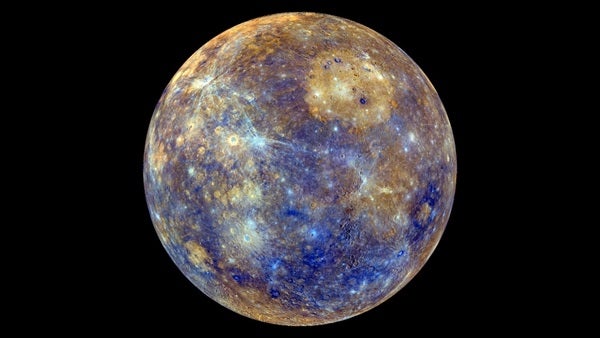What happened to the debris from the collision that formed the Caloris Basin on Mercury? Why didn’t it form a moon?
Mercury’s Caloris Basin is about 950 miles (1,525 kilometers) across. For comparison, the state of Texas is 773 miles (1,244 km) wide. The Moon has a similarly sized impact crater, Mare Orientale.
Researchers estimate that the collision that created the Caloris Basin occurred some 3.8 billion years ago, when a small body about 93 miles (150 km) across crashed into the planet. The impact sent seismic waves rumbling around the planet and even through its core. These tremors disrupted the surface on the opposite side of Mercury, jumbling it into what researchers call “weird” terrain.
As to why the impactor didn’t create a debris disk that eventually coalesced into a moon like Earth’s, the simple answer is that Mercury is too close to the Sun and its mass is too small. Every object has a region around it in which its gravity dominates, known as the Hill sphere. In order for a satellite (natural or human-made) to stay in a stable orbit around a body, that satellite needs to be within the Hill sphere. In our solar system, a planet’s Hill sphere is dictated by its orbit (more specifically, its orbit’s semi-major axis — the long semidiameter of an oval), its mass, and the Sun’s mass. In Mercury’s case, its Hill sphere is so small that any debris flung up from the impact that created the Caloris Basin either careened out of the Hill sphere and into the Sun, or crashed back into the planet, rather than lucking into a stable orbit and forming a moon.










